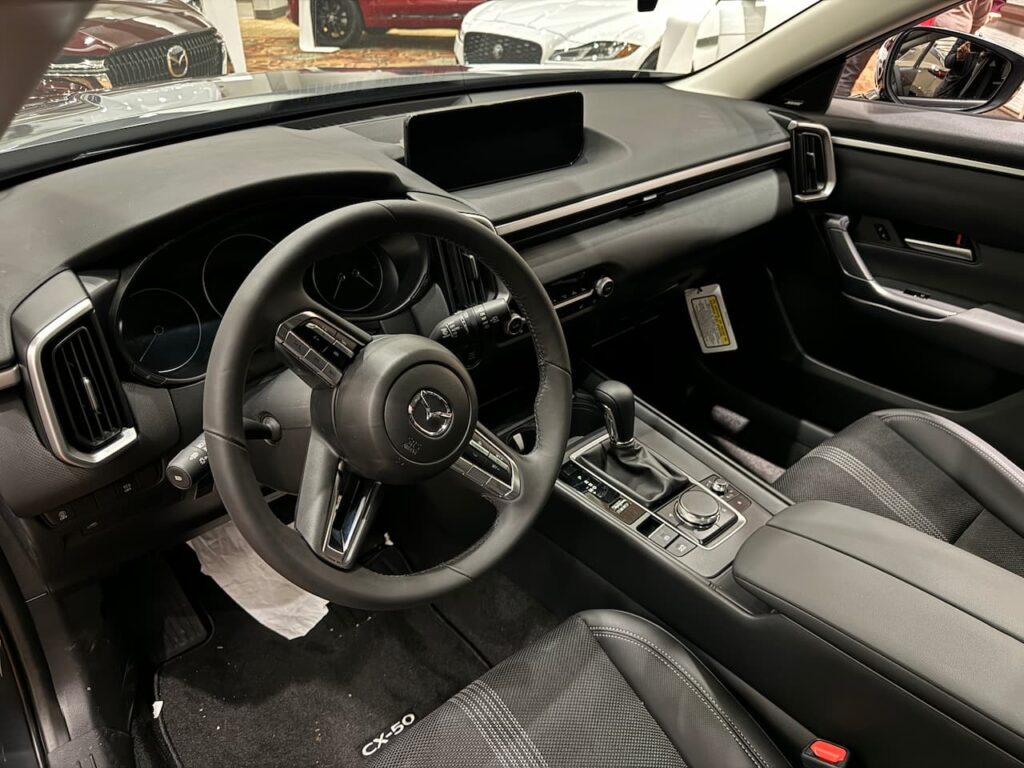Update: Price & Release Date section revised with information on the new timeline.
The Mazda CX-5, the brand’s best-selling model in the U.S., is set for a full redesign after eight years, marking its entry into its third generation. During my experience with the compact SUV, I loved its stylish looks, well-equipped interior, and engaging performance. However, you haven’t seen much about it on TopElectricSUV since it lacked any form of electrification in America. That is, until now.
Mazda has confirmed that the next-gen CX-5 will be available as a hybrid, aligning with the segment’s shift toward electrification. It is expected to be released in the U.S. either as the 2026 or 2027 Mazda CX-5, and here’s everything you should know about the incoming SUV.
CX-5 Hybrid confirmed
Mazda has confirmed that it is developing a brand-new hybrid system and the next-generation CX-5, which is expected to be its biggest launch in 2025. While the CX-50 Hybrid, introduced last year, uses Toyota’s hybrid powertrain, the Mazda CX-5 Hybrid will use an in-house system:
Next-generation CX-5 currently under development and planned to be equipped with a Mazda-developed hybrid power system combining a Skyactiv engine featuring improved exhaust and heat efficiency with electrification technologies.
Mazda Integrated Report 2024 released on October 31, 2024
Design & Styling
Mazda will retain its signature ‘Kodo – Soul of Motion’ design language for the new CX-5 but refine it with more dynamic proportions and a bold, sensual look. We expect the SUV to debut a new shade of red, continuing Mazda’s tradition of launching key models with an exclusive color, and sport the new Mazda logo.

Having analyzed recent spy shots of the first test prototypes from the U.S. and Europe, we notice that the front fascia will feature slimmer headlights, inspired by Mazda’s 創 Arata design. The two-tier lamps and sharpened grille lend the compact SUV a more upright stance.
The Japanese designers have preserved the CX-5’s generous glasshouse which should retain the current level of outward visibility. Noticeable changes on the profile include new door skins, thicker cladding, and sharpened door handles, all of which have been reflected in our exclusive illustrations.
At the rear, the taillights will be slimmer and adopt an L-shape, while the Mazda lettering could take the place of the conventional logo, contributing to a futuristic and sleek appearance. Unlike many competitors that are phasing out visible exhaust pipes, Mazda is expected to retain exposed dual exhaust tips, a subtle indication that the brand intends to continue internal combustion engine (ICE) models for as long as possible.
Interior & Features
The interior is expected to prioritize function over form, and focus on usability. That said, a new slim dashboard is expected to house a wide, free-standing central display, while a traditional round steering wheel with push buttons and toggle switches should ensure a tactile experience.

A 12.3-inch digital instrument cluster, sourced from Panasonic, should provide key driving information, while a traditional climate and multimedia control panel with physical knobs and buttons will ensure ease of use. We’re not expecting rear seat space to improve, and boot space should remain at 58-60 cu.ft.
Specifications
Although electrified, the next-gen CX-5 will emphasize simplicity to keep costs down and enhance reliability. Mazda aims to reduce complexity by approximately 60%, as outlined in the company’s aforementioned investor presentation.
Plan to equip next CX-5 with a Mazda-developed hybrid engine.
From Mazda Motor Corporation’s Financial Results For Fiscal Year March 2024, published on May 10, 2024
The hybrid system will be indigenously developed, allowing Mazda to maintain control over engineering, avoid licensing fees, and ensure a driving experience that aligns with Mazda’s ‘Jinba ittai’ philosophy.

While there’s no confirmation on the engine displacement or the number of electric motors, we expect to see a 2.0 or 2.5-liter SkyActiv gasoline engine paired with an optional e-AWD system. In its highest spec, this powertrain should have an electric generator motor and an electric propulsion motor, generating around 200 hp, and offer a fuel efficiency of around 40 mpg (combined). The lithium-ion battery should be 1.1-1.5 kWh capacity, and should give drivers a couple of miles of pure-electric range.
Price & Release Date
Mazda is expected to price the next-gen CX-5 Hybrid at around USD 34,000, which should be competitive for the compact hybrid SUV segment. As per Japan’s BestCar magazine, the Hybrid version is expected to be released next year, with the debut model featuring a conventional gas engine this year.
We are expecting the first units of the hybrid model to reach U.S. dealers sometime next year. Upon its launch, the CX-5 Hybrid will compete with the facelifted CR-V Hybrid, next-gen RAV4 Hybrid, as well as the Tucson Hybrid, Sportage Hybrid, and the Forester Hybrid.
As for the new CX-5’s global premiere, Craig Roberts, Managing Director at Mazda Southern Africa, told MoneyWeb that it will debut in the third quarter of this year (between July and September 2025).



